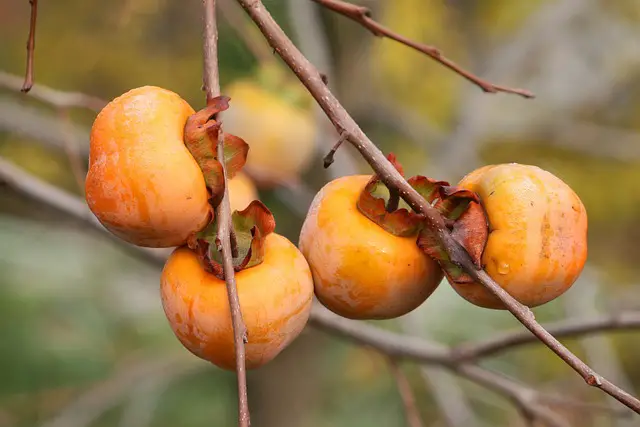
My choice to grow a persimmon tree in my backyard was embarrassingly simple – there were some nice, well-priced persimmon trees at the nursery, and I had a spot to fill in my landscape. I had never even tasted a persimmon before (dangerous, I know – I’ll never forget how disappointed I was when I first tasted dragonfruit).
But as I began researching persimmon trees, and especially once my tree produced its first super-sweet persimmons, I quickly learned what a lucky purchase this was.
Anyone who already has a persimmon tree would probably agree with me: more people should get to enjoy the many benefits of growing these easy, beautiful, and productive plants. Below are just a few of the compelling reasons to grow your own persimmon trees.
1. There’s a variety for every taste.
Persimmons are categorized both by flavor – astringent vs. non-astringent – and native origin – American vs. Asian (or Japanese/Oriental). There are some important distinctions between these types, which also means there’s a persimmon for everyone – even those with picky palates.
Astringent persimmons must be allowed to soften completely before eating, almost to a jam-like consistency (they may look rotten, but they’re not!). These have a naturally high level of tannins and can taste bitter and dry if underripe. Once astringent persimmons are completely soft, however, they taste extremely sweet and rich, like high-quality maple syrup or honey.
Non-astringent persimmons are also very sweet (although not as sweet as astringent varieties), but are still firm when ripe. You can enjoy these when they are crisp like an apple, or let them soften just a bit to a juicy, peach-like texture. The flavor reminds me of a sweet, slightly spiced pear or plum, or a peach without the “peach-y” quality.
Read more about the merits of astringent and non-astringent persimmons here.

The persimmons you are likely to find in a grocery store are the Asian types, since they hold up better to shipping and can be enjoyed even when underripe. Asian persimmons (Diospyros kaki) can be either astringent (‘Hachiya’, for example) or non-astringent (‘Fuyu’ is the most popular). The fruits are larger than their American cousins (about the size of a peach or apple), and can be either round or slightly elongated in shape.
American persimmons (Diospyros virginiana) are usually the astringent type and have smaller fruits – only about 1-2 inches in diameter. The trees grow larger than Asian persimmons, up to about 50 or 60 feet. Many of these trees will need another persimmon tree for pollination, although there are some self-fertile cultivars (such as ‘Prok’).
Related: American vs Asian Persimmons: What’s the Difference?
2. They’re beautiful in the landscape.
Both Asian and American persimmons are substantial and highly ornamental trees. In the spring, the small persimmon blossoms are creamy white to pale yellow or green, contrasted against the darker green leaves. The tree’s canopy naturally spreads, providing dappled shade for summer naps.
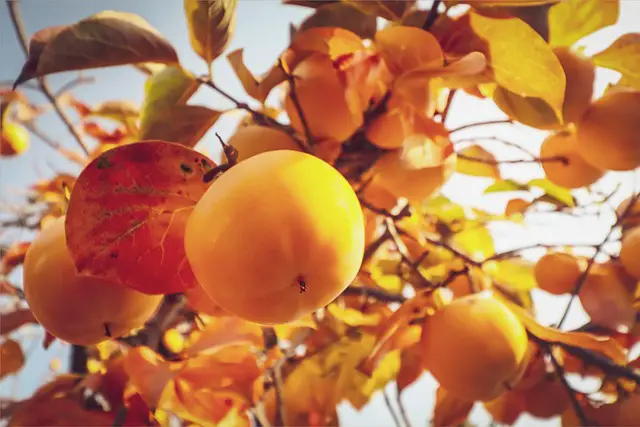
In the fall, the leaves turn vibrant yellow, then orange and copper. Just as the fruits are ripening to their final bright yellow/orange/red color, the leaves fall and the fruits hang like lanterns on the bare branches. Even the bark is interesting and rough-textured.
3. They’re suited to most climates.
In colder areas, plant an American persimmon. These trees are native to North America, and they are found growing wild throughout much of the southeastern and northeastern U.S. They grow happily in USDA zones 5-9 and can survive temperatures as low as -25°F. Learn more in my article, Persimmon Trees are for Cold Climates Too (15 Trees to Try).
Warmer climates are better suited for the Asian persimmon varieties. As the name suggests, Asian persimmons originated in the warm, subtropical temperatures of China and northern India. In America, these trees do well in zones 7-10. An Asian variety that is grafted onto American persimmon rootstock may be even hardier, to about zone 6.
Basically, persimmon trees like warm weather with some winter cold, but they are highly adaptable to different conditions. They do well in humid climates but can thrive in semi-arid areas too.
4. They’re low-maintenance.
This is one of the best things about growing persimmon trees…they take very little work on the part of the gardener. They are not picky about the soil they grow in, as long as it isn’t too waterlogged or heavy (to avoid root rot). In fact, you’re better off not amending the soil at all so that the persimmon tree can adapt to the nutrients available in that location.
Related: Planting a Persimmon Tree: Where, When, and How to Do It
For similar reasons, you don’t need to fertilize a persimmon right after planting. Allow the tree to establish itself in the landscape before considering fertilizer. As long as the tree has deep green leaves and is growing about a foot per year, you may not need to fertilize at all. If you notice the leaves starting to pale or the growth rate slowing, feed the tree in early spring with a balanced 10-10-10 slow-release fertilizer.
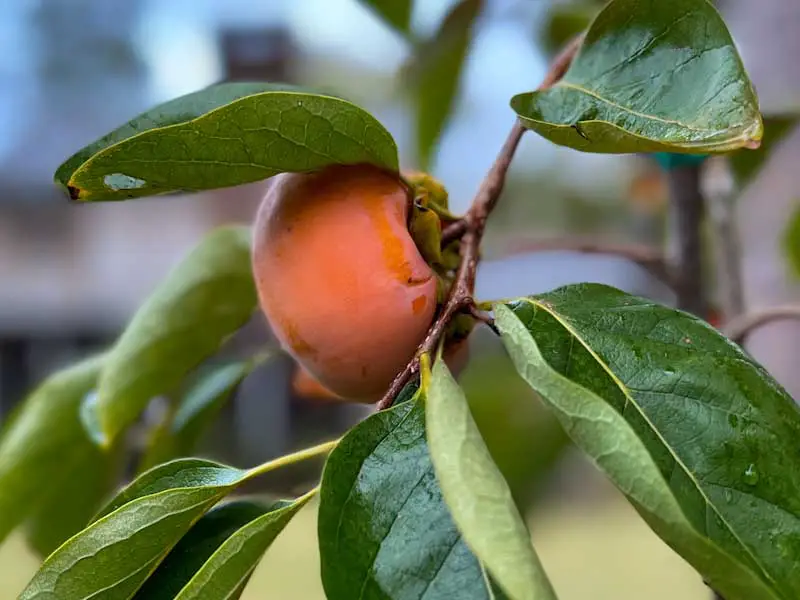
Persimmon trees are pretty drought-tolerant, too. It’s always a good idea to give a new tree or plant regular watering in the first year, but after that it should need little extra watering. Established persimmon trees will tolerate short periods of hot, dry weather (but plan to water the tree if a drought lasts longer than a couple of weeks).
Related: Growing Persimmon Trees: How Hard Is It?
5. They’re virtually disease and pest free.
In contrast to many other fruit trees (I’m looking at you, peaches), persimmons are naturally resistant to pests and diseases. You don’t need to spray or treat them at all. Just let the tree be. Occasionally you may see the leaves chewed by caterpillars, or there may be fruit flies or ants around the ripening fruit, but these shouldn’t affect the crop or the overall health of the tree.
Crown gall (a bacterial infection) and Anthracnose (a fungal disease) could occur, but these problems are rare. The biggest pest issues you may face are from the biggest pests: deer, possums, raccoons, birds, and rodents. The ripening persimmons are as appealing to wildlife as they are to people! You can pick the fruit a bit early and allow it to ripen inside to avoid having to share, but chances are, there will be enough fruit to go around.
6. They need minimal pruning.
Persimmon trees don’t necessarily need pruning to produce a good crop of fruit. Too much pruning can even lead to fruit drop, so it’s a good thing to not reach for your pruning shears.
Be aware, though, that even though persimmon trees grow relatively slowly, they do get large. Some moderate pruning in the winter can help control the shape and size of the tree, making harvest easier.
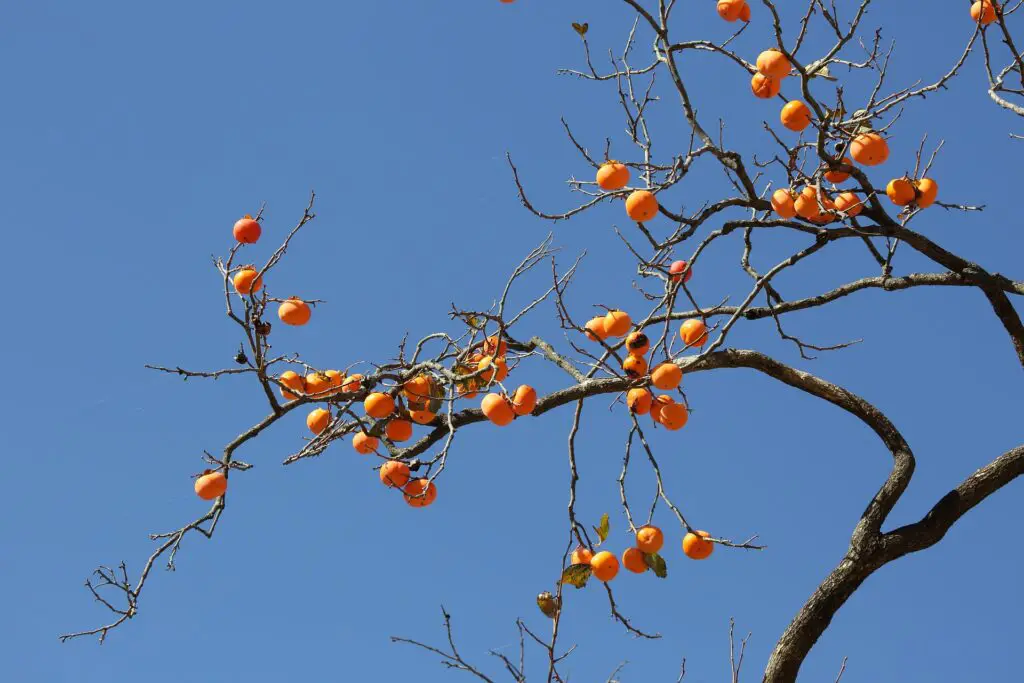
Persimmon trees often produce a heavy crop one year which leads to a much smaller crop the next year as the tree recovers (this is called biennial bearing). As the young fruits form, you can thin them by removing 1/4 to 1/3 of the fruits. This will allow the remaining persimmons to grow larger and will give you a reliable crop every year.
But if you don’t want to prune at all? That’s just fine.
7. They’re good for wildlife.
I mentioned those animals earlier who might like to snack on your persimmon harvest…and hopefully you can share some of your bounty with them. Animals and birds love these fruits, and they provide important sustenance for many species of wildlife.
Persimmons can host the caterpillars of the Luna moth, for example. Birds may eat some persimmons, but they also eat harmful insects in the garden. These critters can be backyard pests, but after all, this is their home too.
8. They have strong, dense wood.
Persimmon wood is very hard and is often used in woodturning. Before aluminum and titanium became common, persimmon wood was often used in making golf clubs. It is also used as a veneer and in some traditional Japanese and Korean furniture.
9. The fruit is versatile in the kitchen.
Any persimmon grown in your backyard will be far superior to what you can buy in the store. The fruits are succulent and very sweet when they are fresh, but persimmons can also be dried or used in all sorts of baked goods, sauces, jams, and preserves.
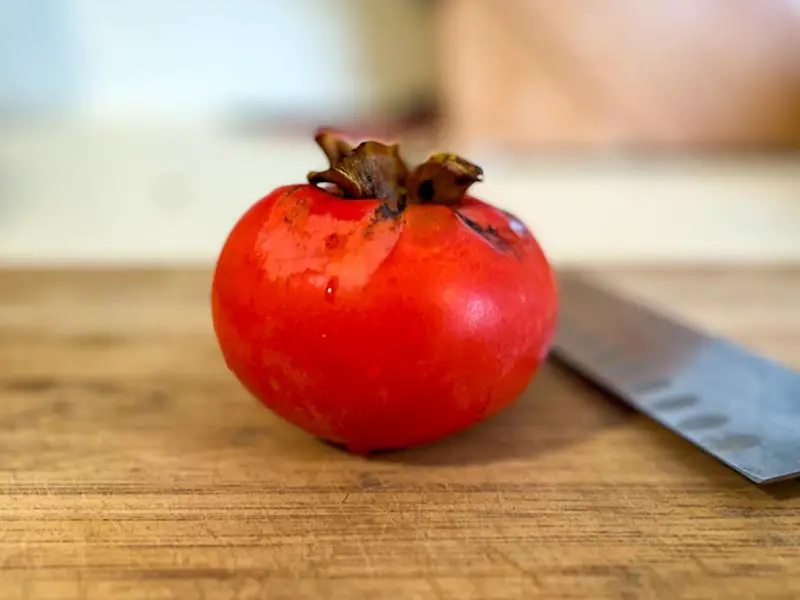
I like to peel and cut up my fresh, ripe persimmons and freeze the pulp, which I later use in smoothies, jam, breads, and desserts. Common flavor pairings with persimmons include cinnamon (and other fall spices like ginger and nutmeg), walnuts, apples, and citrus. Persimmon leaves can even be brewed as a tea.
10. The fruit is highly nutritious.
In addition to all of the other reasons to grow persimmons, they are also packed full of nutrients. A persimmon is rich in vitamins A and C, high in fiber, and low in calories. Persimmons are full of antioxidants, which are known to help reduce the risk of certain chronic diseases. For more information on the nutritional value of persimmons, check out this Healthline article.

